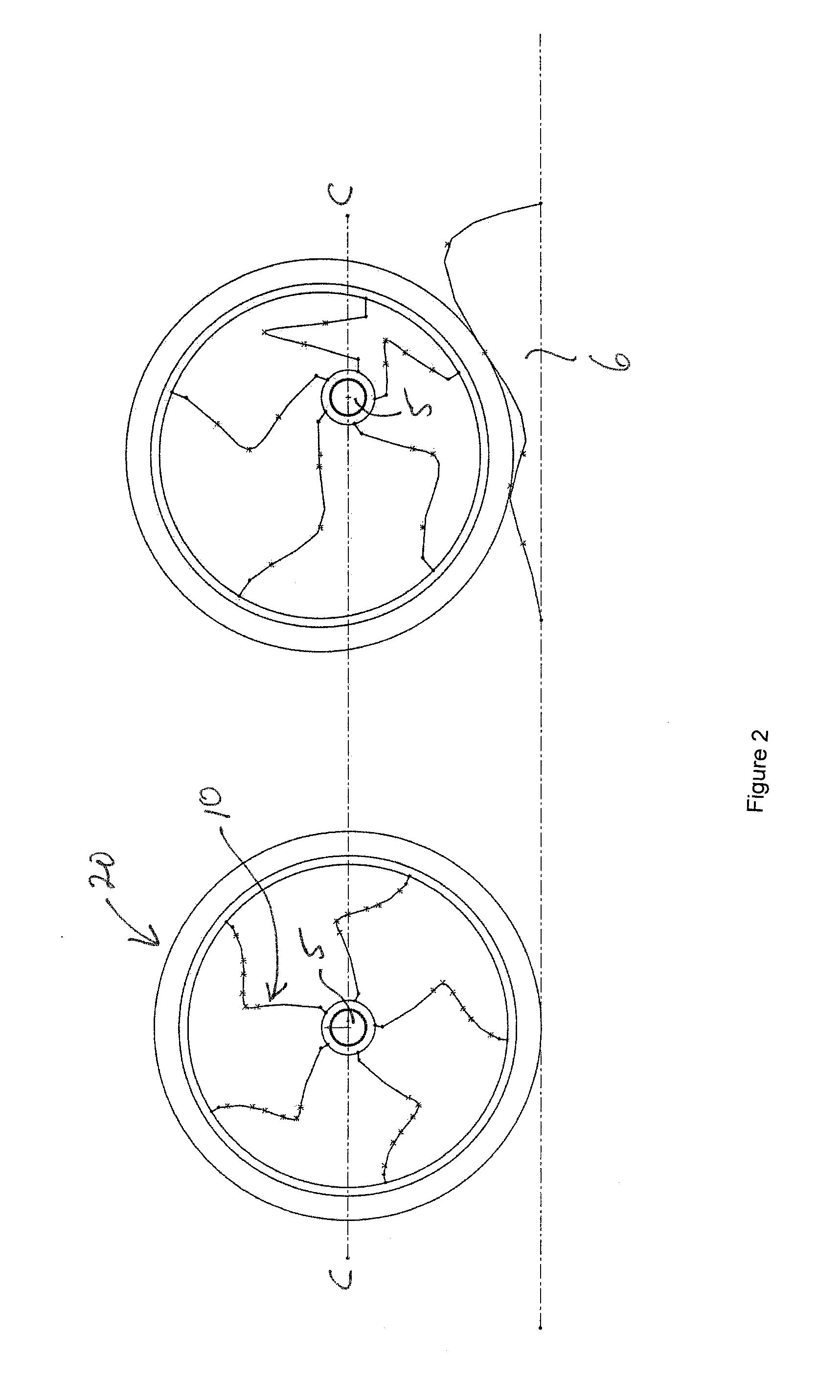Reactive planar suspension for a wheel
a planar suspension and wheel technology, applied in the field of suspension systems, can solve the problems of affecting the overall size and weight of the vehicle, the occupying of existing suspension systems, and the common injury and death of falling over upon hitting an obstacl
- Summary
- Abstract
- Description
- Claims
- Application Information
AI Technical Summary
Benefits of technology
Problems solved by technology
Method used
Image
Examples
Embodiment Construction
[0049]With reference to FIG. 1, this is a schematical representation of the limitations of current suspensions. Current suspensions are not fully effective at absorbing all of the energy encountered by a wheel contacting an obstacle. As can be seen in the Figure, a wheel 1 encountering an input in the nature of obstruction 2 can move only in the fixed linear or fixed planer path permitted by the suspension. Accordingly, while some of the energy from the impact is absorbed by the suspension's spring and damping mechanism, such as springs and shock absorbers 3, or a combination thereof, a vectored component 7 of the energy is transferred directly to the chassis along the impact's reaction line 4. This is one reason that sharp elevated bumps in the road can feel so jarring compared to relatively larger holes or depressions in the road which deflect the wheel more conformingly in its fixed linear or planer path of travel so that the reaction line is more directly into the shock absorber...
PUM
 Login to View More
Login to View More Abstract
Description
Claims
Application Information
 Login to View More
Login to View More - R&D
- Intellectual Property
- Life Sciences
- Materials
- Tech Scout
- Unparalleled Data Quality
- Higher Quality Content
- 60% Fewer Hallucinations
Browse by: Latest US Patents, China's latest patents, Technical Efficacy Thesaurus, Application Domain, Technology Topic, Popular Technical Reports.
© 2025 PatSnap. All rights reserved.Legal|Privacy policy|Modern Slavery Act Transparency Statement|Sitemap|About US| Contact US: help@patsnap.com



